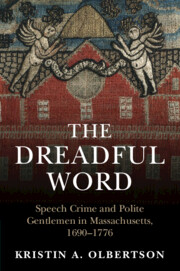2 - A Politer Peace
Published online by Cambridge University Press: 03 March 2022
Summary
A polite social order emerged out of significant demographic, economic, and political changes in the early to mid-eighteenth century, and was established according to novel ideas about personal virtue, piety, and white masculinity. Members of an exclusive merchant elite embraced new models of personal deportment and constructed physical spaces, both public and domestic, in which to practice and display their gentility. Shared values, including an ethos of polite speech, united this elite and linked them with their English counterparts. Polite speech was explicated in conduct and courtesy books, in popular periodicals, in personal conversation with fellow gentlemen – and as distinct from vulgar speech, increasingly associated with particular types of people. Linguistic and social hierarchies proved to be mutually reinforcing, and, for the genteel, it was increasingly impolite (not ungodly or sinful) speech that posed the greater threat to good social order or “the peace.” That new social order would be enforced and enacted through law, the statutes, and procedures by which impolite speech was criminalized, prosecuted, and punished.
- Type
- Chapter
- Information
- The Dreadful WordSpeech Crime and Polite Gentlemen in Massachusetts, 1690–1776, pp. 35 - 61Publisher: Cambridge University PressPrint publication year: 2022

